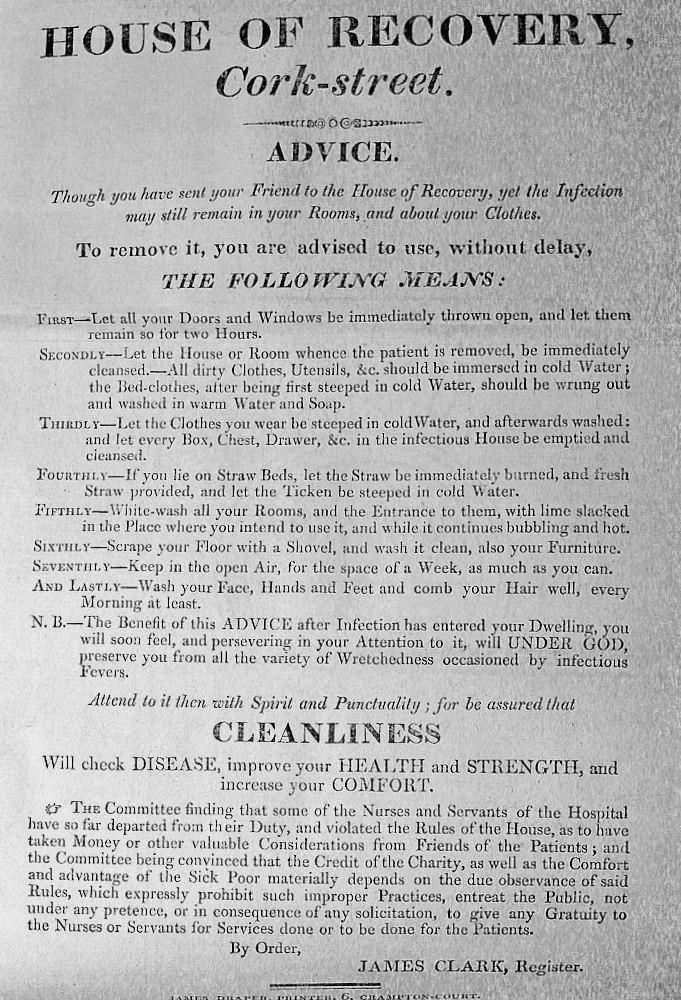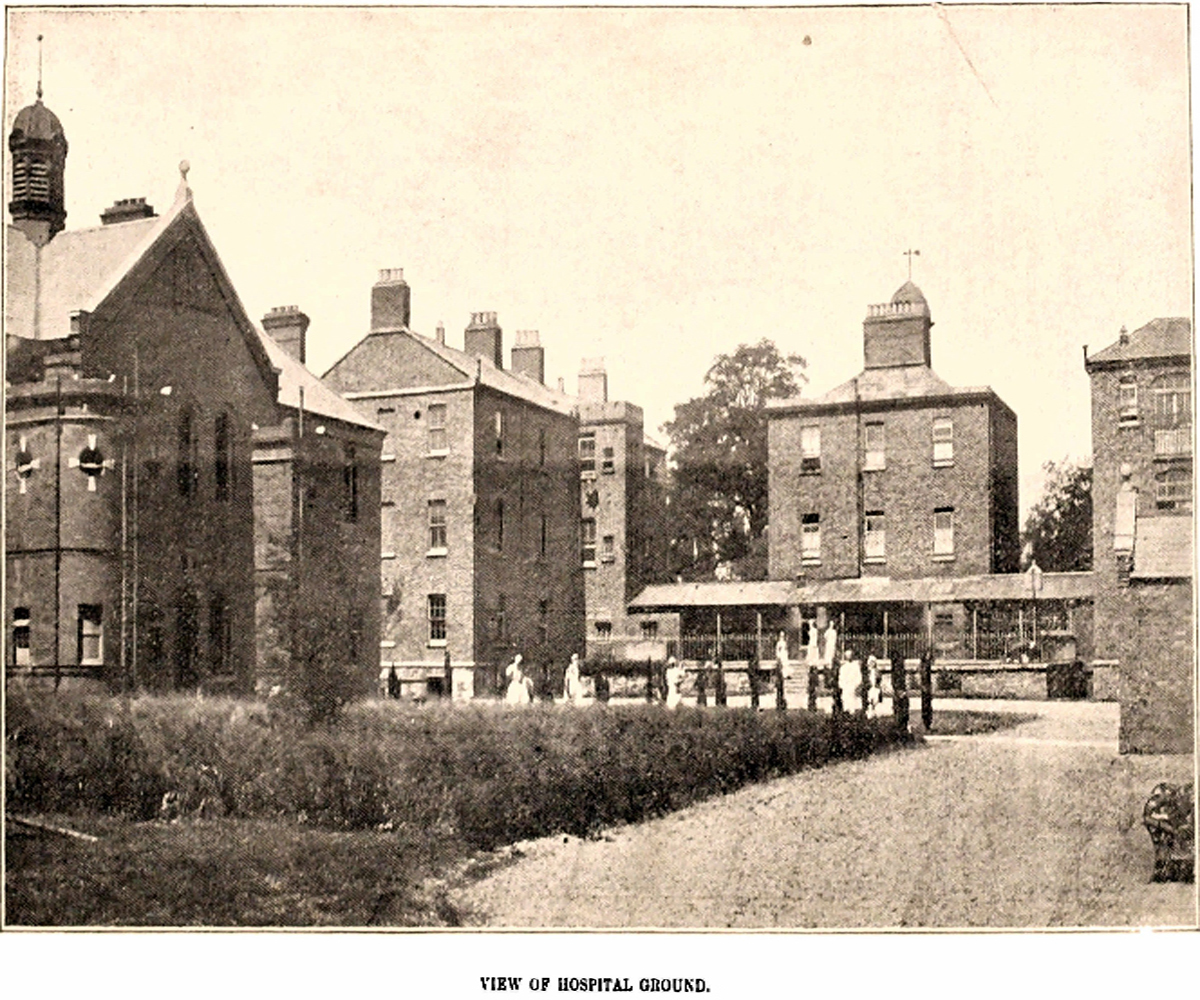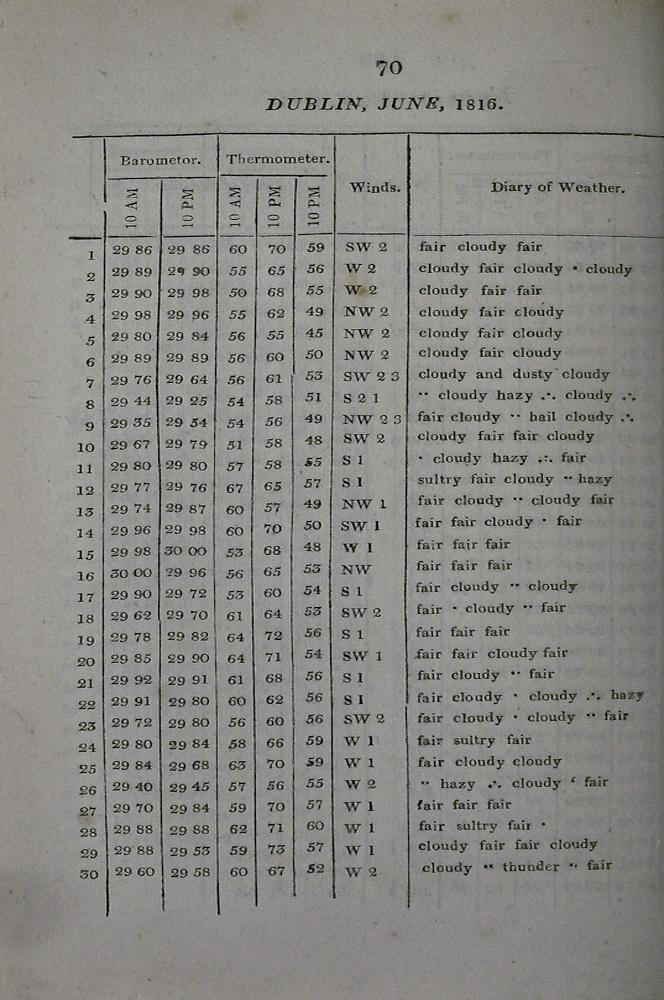Guest Post - Theories on the causes of fever in early 19th century Dublin
This is the second guest post is by Noel Bennett, who completed an MA in Local History in NUI Maynooth in October 2010. Noel's thesis was entitled 'The House of Recovery: Cork Street Fever Hospital, 1804-1854'. The following article is formed from extracts from this thesis. Noel's first article can be viewed here.
In
the early years of Cork Street Fever Hospital, which opened in 1804, medical
staff were constantly trying to comprehend the reasons behind the spread of
various febrile diseases in the poor neighbourhoods of Dublin. Of these
diseases typhoid, malaria, scarlet fever, measles and dysentery were primarily
responsible for many admissions to the hospital in the early 1800s.
 |
Advice to relatives and friends of patients in Cork Street Fever Hospital, printed in the 1813 Annual Report
(CSFH/1/2/1/1) |
The
problem for the medical staff in Cork Street was attempting to understand the
causes of fever. Many likely causes were identified and these ranged from the
direction of the wind to the issue of cleanliness or the lack of it. In their
annual report of 1806 the death of a recently employed nurse-tenderer is
mentioned and the likelihood that her death was hastened by her lack of
experience in dealing with fever patients. Cleanliness, the authors emphasise,
is the greatest defence against fever. They contend that contagious diseases do
not spread in the upper ranks of society due to ‘their frequent ablutions and
change of apparel.’ The treatment of fever was not passive and the homes of
their patients were often whitewashed either by hospital staff or by the Sick
Poor Society of Meath Street.
In the 1807 annual report, the spread of fever is attributed to the prevalence of easterly winds. The report contains an observation which
states that the nature of an epidemic is much modified by the contribution of
the atmosphere. This belief is also evident in the hospital’s annual report for
1816, in which the weather conditions of every single day in the first three
months of the year are recorded. The barometer and thermometer readings at
specified times of the day, direction of the wind and a brief description of
the overall weather conditions are all noted.
 |
| Late 19th century photograph of the hospital ground, reprinted in annual reports (CSFH/1/2/1) |
This belief was also expressed by Dr William Stoker,
physician in Cork Street, in his 1835 review of the epidemic diseases of
Dublin. Stoker’s review commenced by examining the cholera epidemic of 1832. In
1831 there had been a trickle of cholera cases treated in the hospital but by
1832 the city was experiencing what was then the worst epidemic of the century.
In Dublin alone cholera affected 11,000 with the death rate put at 5,273
persons.
Cholera had spread across Europe through the shipping ports. It reached Quebec
where its origins were attributed to an Irish emigrant ship.
Stoker was of the opinion that ‘east and northeast winds
blowing from an extensive strand and victual soil during the time of neap
tides’ added to the extent of the problem. This affected people living on the
lee shore many of whom were predisposed by ‘want of necessary support or by
despondence from the miserable state of trade.’ The first outbreak that year
occurred during Lent, and he believed that fasting contributed to the problem.
He also stated that from his conversations with Roman Catholic and Protestant
clergymen, the fever was confined entirely to members of the Catholic faith.
 |
| Extract from a weather report, printed in the 1816 Annual Report (CSFH/1/2/1/1) |
Cork Street Fever Hospital refused to treat the victims of
cholera during this epidemic, believing it to be so infectious as to threaten
the lives of other patients. The board actually obliged Dr. Stoker to retire
for ignoring this rule despite his thirty two years of service there. Other
Dublin hospitals also refused on the same grounds. A public meeting of medical
officers was held in the coffee room of the Royal Exchange to demand that
cholera patients be treated in fever hospitals. Various proposals including one
demanding a posse of police to force hospitals to admit cholera patients were
put forward. This meeting referred to the ingratitude of Cork Street for their
outrageous treatment of Dr Stoker. In the event cholera patients were treated
in Grangegorman hospital which was referred to as the Dublin Cholera Hospital.
Noel Bennett,
MA in Local History,
NUI Maynooth